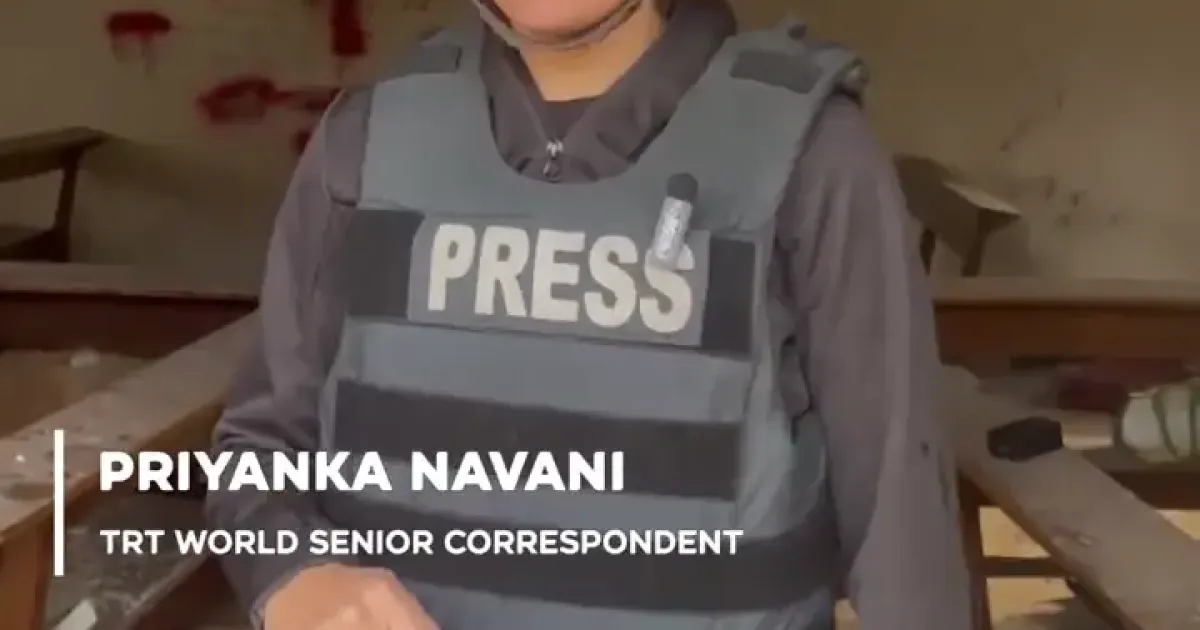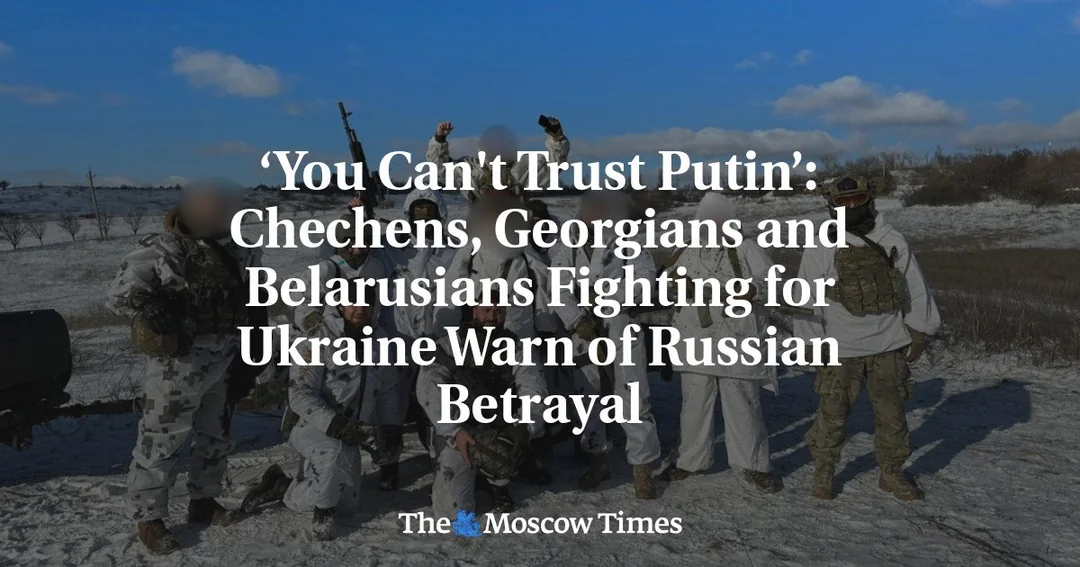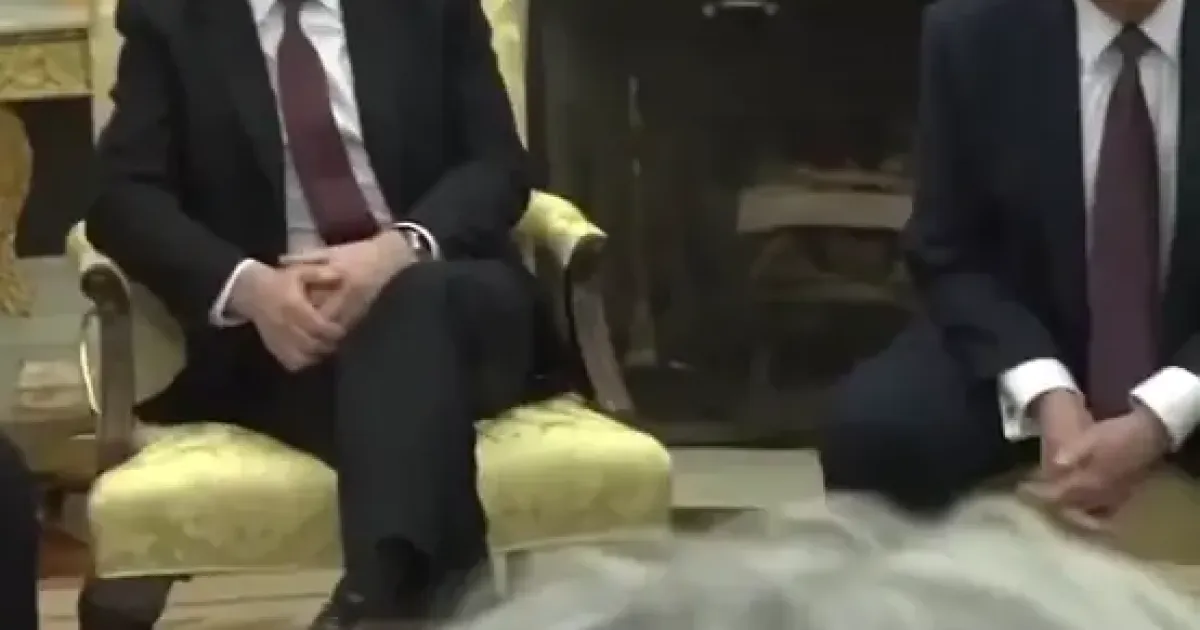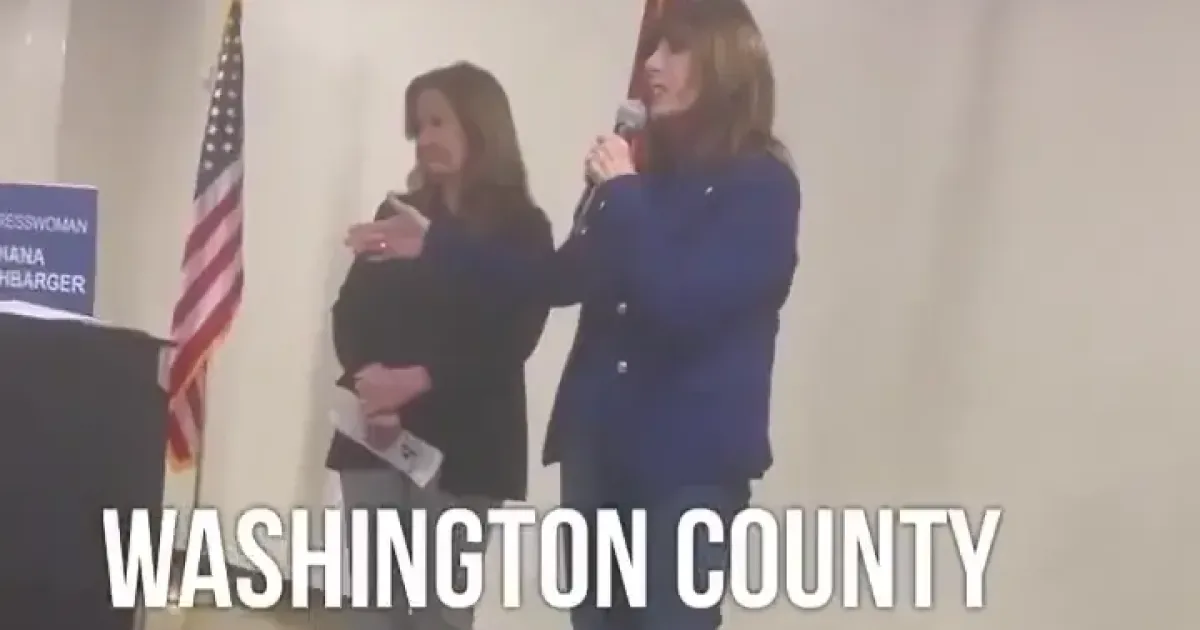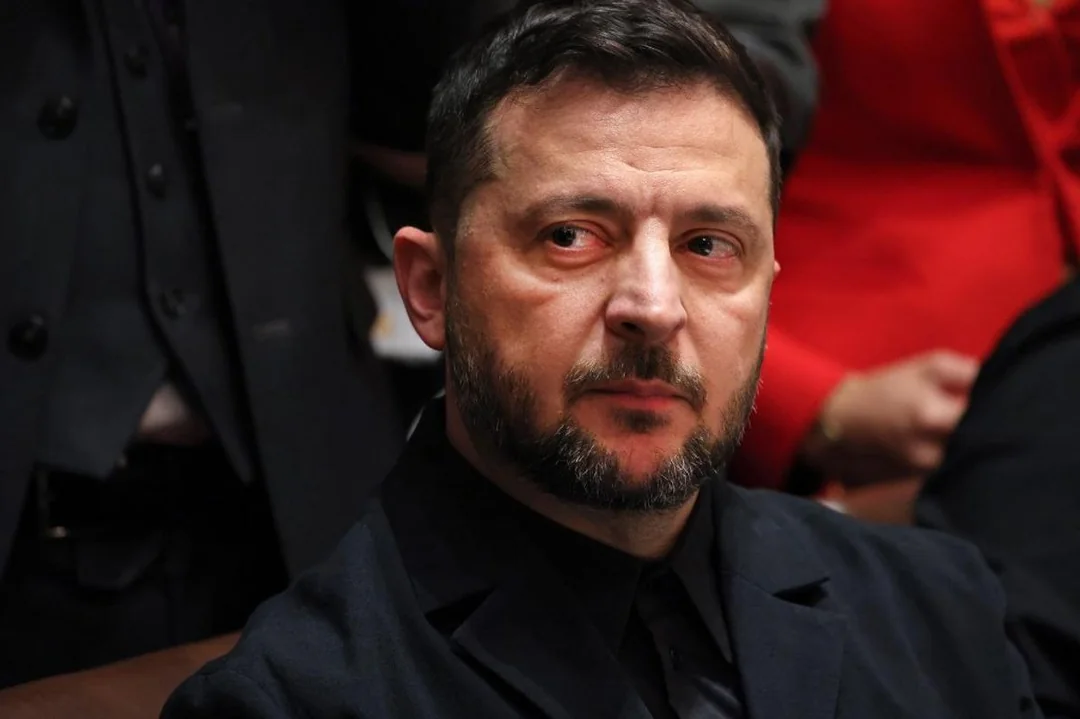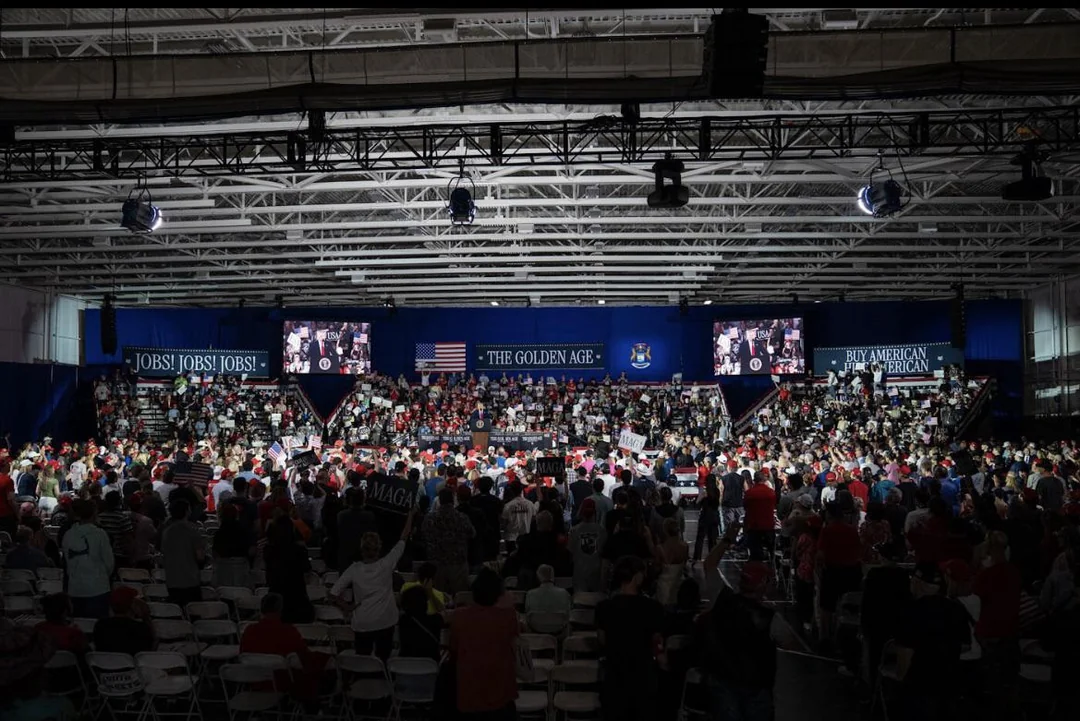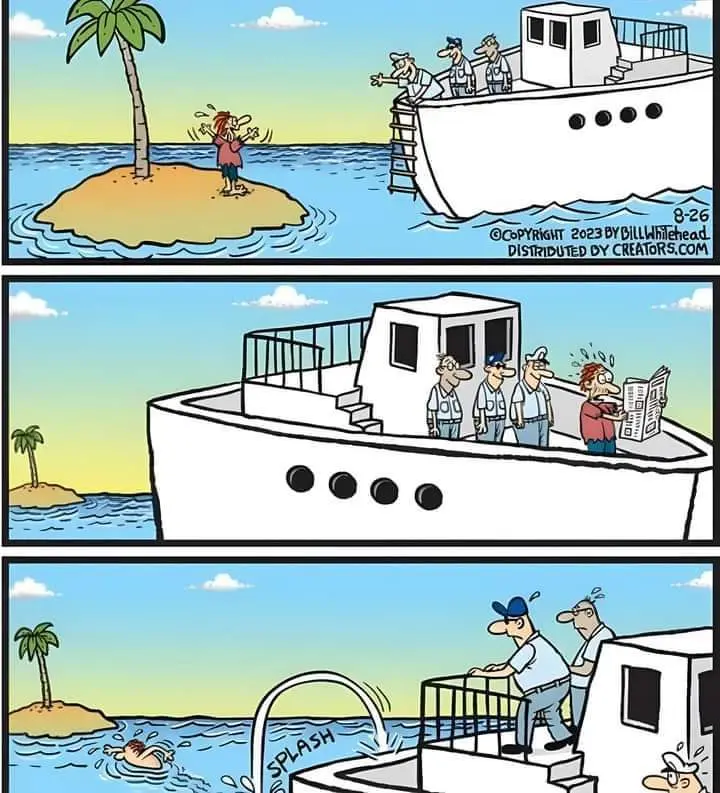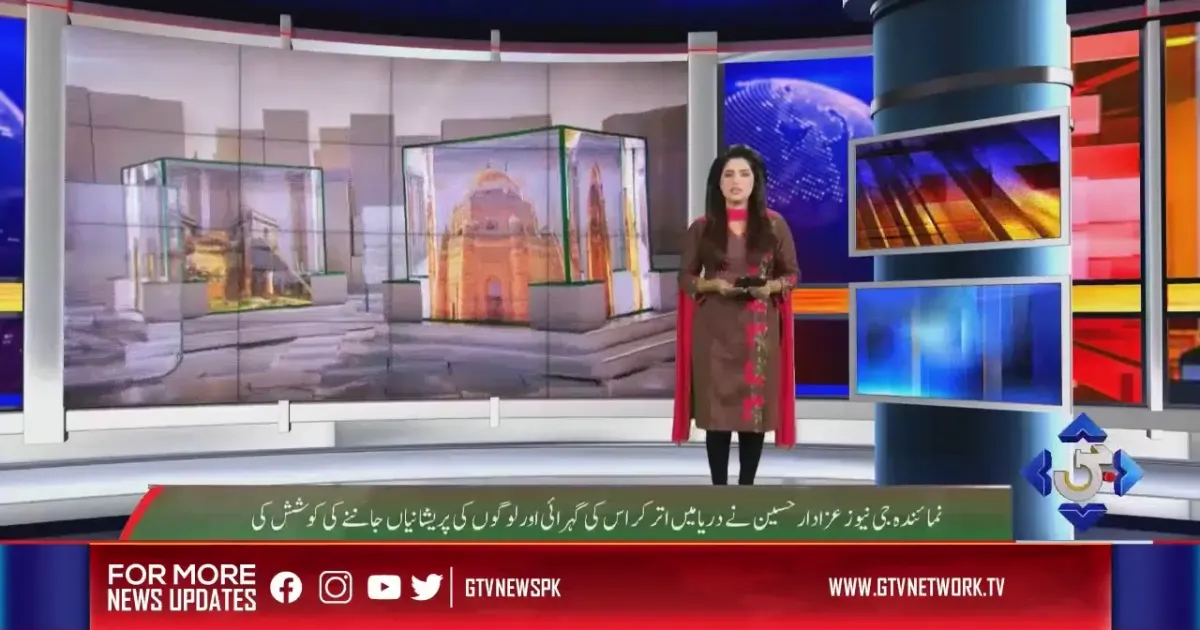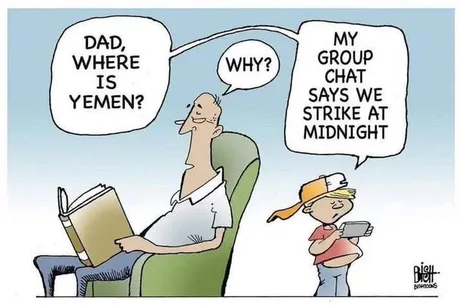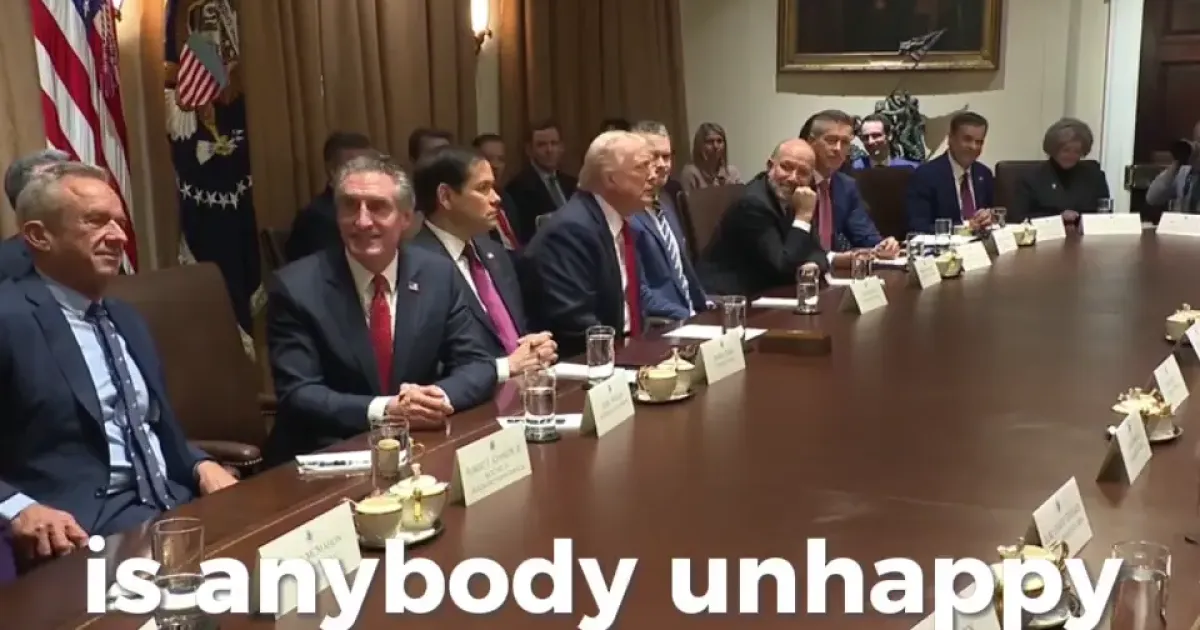
After Mass Firings and Ebola Funding Cut, Trump Asks if Anyone Is Unhappy with Elon – Cabinet Responds with Laughter and Applause
After firing approximately 30,000 federal employees, admitting to accidentally stopping Ebola funding, sending emails to over 1 million federal employees asking them to list their weekly accomplishments, Trump ask is anyone unhappy with Elon and his Cabinet responds with laughter and applause.
#News #ElonMusk #Trump #USA
Read More...
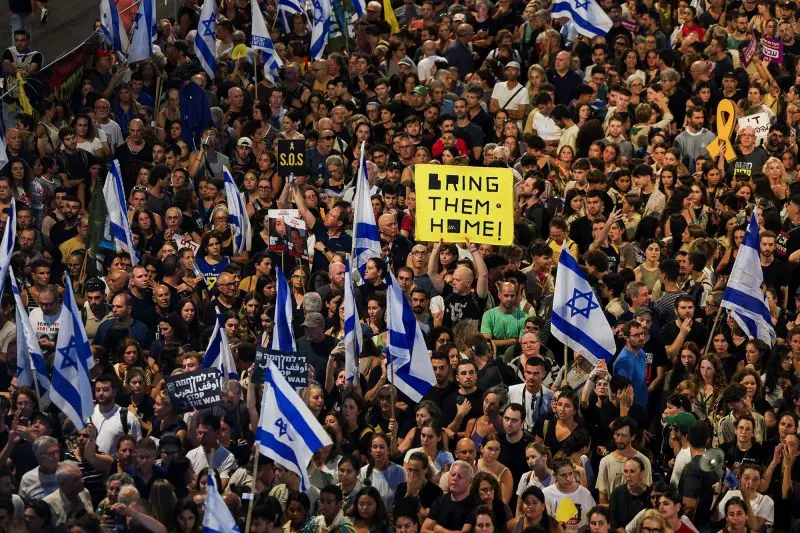
Netanyahu defiant as protesters demanding a ceasefire-for-hostages deal bring Israel to a halt
Hundreds of thousands of protesters took to Israel’s streets in fresh fury on Monday over the government’s failure to secure a ceasefire-for-hostages deal with Hamas. Demonstrations could be seen in Jerusalem, Tel Aviv, Caesarea and other sites across the country, fueled by the killing in Gaza of six hostages, whose bodies were retrieved by Israeli soldiers this weekend.
Several gatherings targeted the homes of Prime Minister Benjamin Netanyahu, with protesters lighting fires and chanting: “You are the leader - you are guilty!” near one of Netanyahu’s private residences in Caesarea. In Tel Aviv, protesters outside the US Embassy chanted “Shame!” late into the evening, video showed.
Netanyahu has been accused of stalling efforts for a deal by some hostage families and their supporters. More than 100 hostages, including 35 believed to be dead, are still being held in Gaza – the vast majority of them taken during Hamas’ October 7 attack on Israel, when some 1,200 people were killed and more than 200 taken captive
The scenes outside the Israeli leader’s homes culminated a day of anger that brought much of the country to a halt, following a call by the country’s largest labor union, known as Histadrut, to shut down the “entire” economy. Flights in and out of Tel Aviv’s Ben Gurion International Airport were also stopped for two hours.
But in a press conference Monday evening, the Israeli leader struck a note of defiance, batting away criticisms – including from US President Joe Biden – that he is not doing enough to secure a deal. He asked for “forgiveness” from the families of the six hostages for failing to bring them back alive, but insisted it should be Hamas that “has to make the concessions.”
He also vowed to retaliate and extract a “heavy price” from the militant group that controls Gaza, for the killing of the six hostages, whose autopsies showed they were shot at short range on Thursday or Friday morning.
Hamas meanwhile escalated its own threats on Monday, with a public warning that more hostages held in Gaza would return “inside coffins” if Israel attempts to free them militarily.
A statement released by the militant group said that its fighters guarding prisoners held in the Palestinian enclave had received “new instructions” on how to deal with hostages if Israeli forces get close, and released an illustrated poster apparently showing hostages threatened with a gun.
Monday saw the largest general strike to have taken place in Israel since March 2023, when there was a similar mass walkout over Netanyahu’s controversial attempts to overhaul the country’s judiciary.
According to union Histadrut, hundreds of thousands of Israelis joined the protests Monday, just a day after half a million took to the streets on Sunday for what protest organizers said was one of the biggest nationwide protests since the outbreak of Israel’s war on Hamas. Israeli police said they had seven demonstrators in Tel Aviv for “violating public order and disrupting traffic.”
‘Netanyahu has made it impossible’
Netanyahu’s defiant stance following the discovery of the six hostage bodies has thrown further doubt on the negotiations for a ceasefire-for-hostages deal.
Even before the killing of the six hostages, the talks had become bogged down, with one key disagreement centering on control of a border area known as the Philadelphi corridor.
Netanyahu says control of the 14-kilometer (8.7-mile) strip of land along Gaza’s border with Egypt is needed to prevent Hamas from resuming arms smuggling through tunnels underneath it. However, the deployment of Israeli troops along the corridor has been a major point of contention between Israel and Hamas in the ceasefire talks, with Hamas saying Israeli troops must withdraw from the border zone.
“Hamas doesn’t want us to be there and that’s why I insist on being there,” the Israeli leader said on Monday.
During a cabinet meeting over the weekend, Israeli Defense Minister Yoav Gallant had lambasted the Israeli government for what he said was prioritizing control of the corridor over a deal to free hostages, calling it a “moral disgrace.”
The relative of one of the hostages who was shot dead in southern Gaza also blamed Netanyahu and his stance on the corridor for their deaths. Gil Dickmann, the cousin of Carmel Gat, told CNN that the Israeli government “cold-bloodedly” crossed a “red line” by prioritizing the corridor over the lives of the hostages.
“We know that Hamas has agreed to a deal at some point, and Israel was the one putting on more and more terms and actually postponing the deal,” Dickmann said on Monday. “Right now, we know the decisions that our Prime Minister Netanyahu has made it impossible for Carmel and other hostages to return and put their lives in great danger, and that’s what killed them.”
But on Monday, even as he acknowledged dissent within his cabinet, Netanyahu doubled down.
“We’re not going to withdraw from the Philadelphi corridor,” Netanyahu told a press conference on Monday evening. “The axis of evil needs the Philadelphi corridor. We need to have it under our control,” he said.
Disagreements over the corridor are only one of the splits within the cabinet over the conduct of the war that have become increasingly public and rancorous in recent months, reflecting deep divisions at the top of Israel’s government.
Just on Monday, Israel’s far-right National Security Minister Itamar Ben-Gvir said he was using his power to prevent a “reckless deal” and ensure “that there will be no negotiations at all.”
He was speaking to members of Gvura, a right-wing organization representing the families of Israeli soldiers killed in Gaza.
But American officials described new urgency in reaching a ceasefire-for-hostages deal. US national security adviser Jake Sullivan said while meeting the families of Americans held hostage that “the next few days will be critical” in the push to free those still held by Hamas.
Alongside the strikes, the funeral of Hersh Goldberg-Polin, one of the six hostages found dead, was held in Jerusalem on Monday. Speaking at the ceremony, Jon Goldberg-Polin said he hoped his son’s death would be “the fuel that will bring home the remaining 101 hostages.”
“Hersh, we failed you. We all failed you. You would not have failed you. You would have pushed harder for justice,” he said. “You would have worked to understand the other, to bridge differences.”
“The 23 years of life that we had with you were a blessing. We now will work to make your legacy a similar blessing,” Goldberg-Polin said. “You were a really great guy. I love you.”
Strike hits public services, schools
As well as an impact on flights, some Israeli municipalities said they joined the strike, including Tel Aviv and Haifa, according to a list from the Histadrut outlining who joined the action as well as statements from some of the cities.
The list also includes government ministries that impact a wide range of public services, the document shows, including parts of the Prime Minister’s Office, the Interior Ministry, and others. CNN has reached out to the Prime Minister’s Office for comment.
Hospitals and healthcare facilities worked on a weekend schedule and on an emergency basis, according to the statement.
The country’s teachers’ union said it would not join the strike, according to a statement from the union, though support staff at schools did.
However, Israel’s biggest universities joined the strike, including the Hebrew University of Jerusalem and Tel Aviv University.
#news #world #breakingnews
Read More...
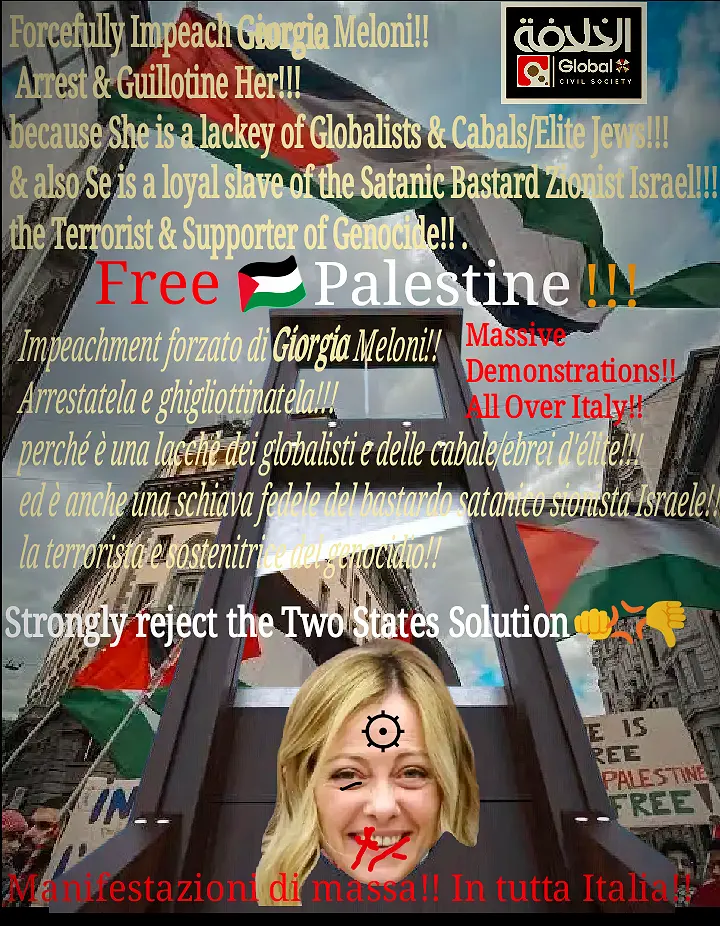
Guillotine Giorgia Meloni - i post this 13 hour ago in other socmed
Italia & World People's all beside Palestinians People ✊🇵🇸🇮🇹🇮🇩
Free Palestine !!!!!!
We Must Prepared at The Endtimes Era's Now!!!
#freedom #palestine #palestina
#news #community #update #global #unite #revolution #GCSC #endtimes #prophecy #civilsociety #ww3 #GreatReset #bunker
Read More...
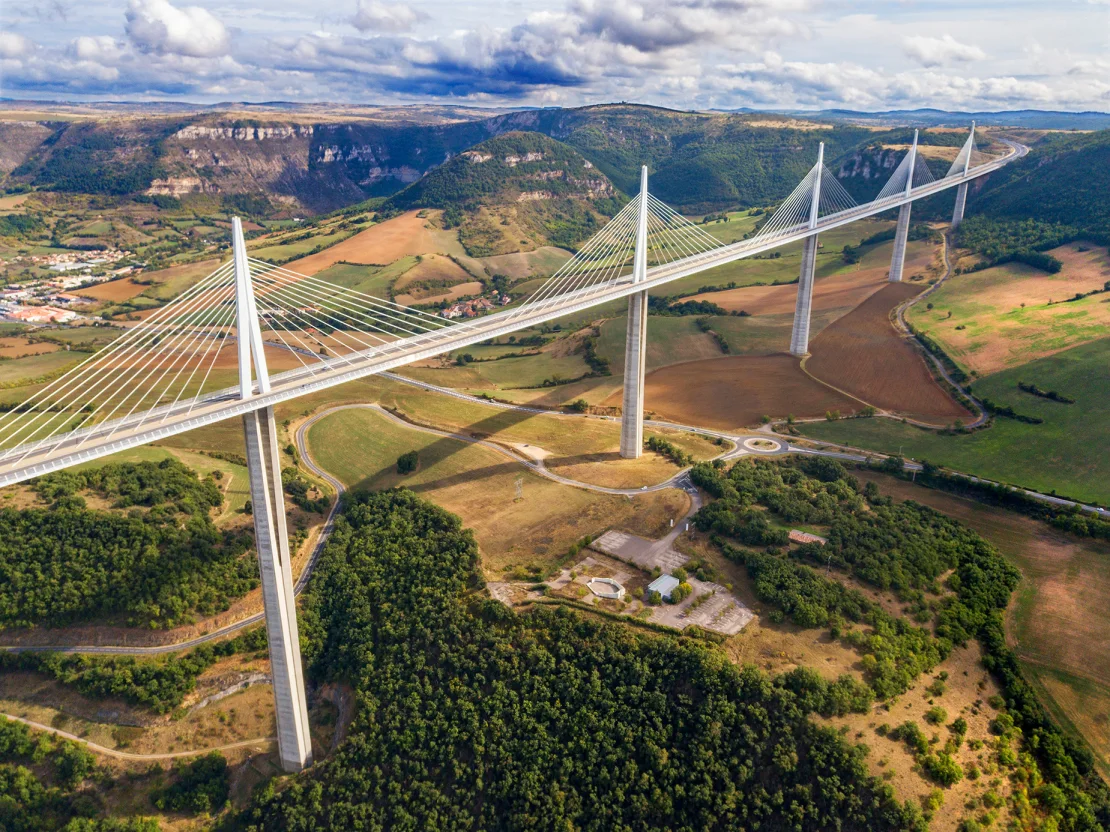
How the world’s tallest bridge changed the map of Europe
Soaring across the scenic landscape, it’s indisputably one of the most beautiful bridges in the world.
Often swathed by mist, so that it feels like crossing through clouds, it is so famous that it has its own visitor center, and people plan trips to the area solely to drive across it. The bridge can even be easily seen from space.
The Golden Gate? No. This is the Millau Viaduct, a perfect example of where engineering meets art. Cantilevered high over the Tarn gorge in southern France, and yawning 2,460 meters (8,070 feet) in length, the Millau Viaduct is the world’s tallest bridge, with a structural height of 336.4 meters (1,104 feet).
But not even those impressive statistics do it justice.
Unlike other famous bridges, which usually connect two points of similar altitude, the Millau Viaduct effectively becomes the opposite of a rollercoaster, plying a flat course across the valley, as the land ripples up and down underneath it.
The seven piers range from 78 meters to 245 meters (256-804 feet) in height, each calculated to the millimeter to make a perfectly smooth experience for drivers soaring across the Tarn. There’s a 342m (1,122ft) span between each pairing – large enough for the Eiffel Tower to slot in the gap. The piers are coupled with seven steel pylons, each 87 meters (285 feet) high, with 11 cable stays fanning out on either side. This all helps keep the “deck” – the road surface, which is around 14 feet thick and weighs 36,000 tons, or the equivalent of 5,100 African elephants – steady.
At the same time as being a work of absolute precision, it’s also beautiful. The Gorges du Tarn area is a protected landscape, yet instead of spoiling the view, the Millau Viaduct enhances it.
It’s a “wonder of the modern world” and an “engineering marvel,” says David Knight, director of design and engineering at Cake Industries and specialist adviser to the Institution of Civil Engineers.
“It’s that perfect interplay of architecture and engineering that means that everybody who sees it thinks it’s spectacular.”
Those living in the valley below look up with wonder; those driving across it – this road, the A75 from Clermont-Ferrand to Béziers, is one of the main north-south routes in France – see the gentle curve arcing across the landscape as they approach. “It gives everyone who uses it a sense of awe,” says Knight.
No wonder that for many, driving across the viaduct is something you travel to do, not something you do while traveling.
So how did this wonder of the modern world come to be built in the middle of France? Why did it take two decades to plan, before opening to traffic in December 2004? And how did it effectively change the map of Europe?
A bridge too far?
The answer to all those questions is geography. The Massif Central is a vast area of highlands cut by deep valleys and gorges, roughly located in the middle part of the bottom half of France. Sprawling across about 15% of the country, and bordered by the Alps to the east, it’s one of the obstacles anyone traveling from north to south of the country – or from northern Europe to Spain – must pass.
So important was this viaduct – but also so difficult – that it was two decades in the planning, according to Michel Virlogeux, the engineer who led the design team – and who first started work on it in September 1987.
“The first problem was not what bridge to build, but where the motorway would pass,” he says.
At the time the Massif Central was remote, despite its central location. There was a single-track railway line, and the roads “weren’t very good,” he says. “The central part of France couldn’t develop due to lack of transport.”
So in the 1980s, the French government decided to upgrade the road network, with then-president Valery Giscard d’Estaing deciding on a freeway. One of the aims was to unclog the notoriously choked road around Millau, where the road descended into the valley and crossed the Tarn river in the city center. Every day there were tailbacks of around 20 kilometers (12.5 miles) either side of the town.
“Going through Millau used to be a traffic blackspot for tourists,” says Emmanuelle Gazel, current mayor of Millau. “There were lots of traffic jams. There were kilometers and kilometers of tailbacks. It gave a very bad image of our area… in terms of pollution it was terrible. And locals took a long time getting from one point to another.”
In the words of Lord Norman Foster, who became the architect of the bridge, the area was “a valley of extreme beauty which had become one of France’s worst bottlenecks.”
The decision to build a bridge around Millau was taken in September 1986, says Virlogeux, who at the time was head of the large bridges division of the French administration. There was just one problem: the geography of the area meant there was no obvious solution. “We started looking where was possible, but many options were bad, and it took almost three years to find a solution,” he says.
One idea was to route the freeway east of Millau, keeping the road on the plateaus, with two suspension bridges to cross the valleys on either side. But that wouldn’t have allowed a connection with Millau – “the only big city between Clermont-Ferrand and Béziers,” says Virlogeux – which needed the economic boost.
So they called in the experts: geologists, geo technologists, road engineers and Virlogeux, who had already designed the Pont de Normandie – the 7,032-foot bridge spanning the river Seine in the northern region of Normandy.
The team’s first idea was to run west of Millau, bringing the road lower in altitude down into the valley, across a bridge at a lower level and up again to the plateau and then a tunnel. They were in the stages of planning when the team’s road engineer, Jacques Soubeyran, had a lightbulb moment.
“He asked, ‘Why are you going into the valley?’ and it was a big shock,” remembers Virlogeux. “The motorway was passing 300 meters above the river. I hadn’t even considered the possibility of passing at a high level. Immediately, I said we were being stupid. We started working on the idea of passing plateau to plateau.”
After just eight days they had detailed drawings of the rippling ground levels, as well as a possible altitude for a freeway snaking across it.
The importance of elegance
They knew where they wanted the viaduct – but what should it look like?
Virlogeux immediately knew that the best option would be a cable-stayed bridge. “Cable is the most efficient structure to carry a load, and you can have a very slender deck so it’s much better to look at,” he says.
Slenderness was important. There was already controversy about the idea of running a bridge through such a famous landscape. To avoid ruining the landscape, it had to “look very quiet.”
Getting the go-ahead took some years. The French government started a competition for the design of the bridge, and in 1996 the commission was won by a group led by Virlogeux as engineer (who had left his previous job a year earlier) and the UK’s Norman Foster – now Lord Foster – as architect. Foster calls their plan to span the valley, rather than the river, a “philosophical concept” that distinguished them from other competitors.
But with the local community up in arms at the idea of their area of natural beauty being spoiled, they face what Foster calls a “design challenge… to create something that would enhance the landscape, sit gently on the floor of the valley – to be the most delicate and light intervention.” Virlogeux says it had to be “pure and simple.”
Yet this precious landscape, which had to be protected aesthetically, was extremely difficult to work around.
“The wind forces at this level are huge and the columns have to accommodate the enormous expansion and contraction of the deck,” says Foster. And we’re not just talking a gentle bounce. The 2,460-meter (8,070-foot) bridge can expand or contract by 50 centimeters (1.6 feet) depending on the weather. Their solution was to add extension joints.
Luckily, while the old adage is that architects and engineers should be at loggerheads, and while you might imagine that two titans of architecture and engineering might clash, Foster and Virlogeux have nothing but praise for each other. Virlogeux says it was a “very easy” working relationship, while for Foster it was a “meeting of minds.” The team had twice-monthly meetings in London while working on the design. “He would ask me, ‘Why do you want this and not that?’ and after that he’d take a decision in five minutes,” says Virlogeux. “Once there was a major controversy about the shape of the deck. He asked me what I proposed, if I was sure it would work. Then he said, ‘OK – architecture must not go against scientific needs.’”
Above the road, the sturdy columns “split” into two more flexible arms, making an artistic statement out of an engineering necessity.
The same goes for the curve of the road, which gently arcs across the valley. It’s not just beautiful; it ensures that there’s no visual overlap – and therefore confusion – for drivers at such a great height. Meanwhile the piers become slimmer as they rise towards the roadway, more or less halving from 24 meters wide at the bottom to 11 meters at the top.
Their design for a cable-stayed bridge with seven elegant piers marching across the landscape and what Foster calls “the snake of a road, improbably thin like a razor blade,” has stood the test of time.
The anxious build
If the design wasn’t challenging enough, then came the construction which started in October 2001. The project cost a cool 400 million euros ($437 million) and was financed by Eiffage, a private construction company which still has the concession for the bridge today. There were 290,000 tons of steel and concrete used to build it, and around 600 builders working on it.
“The huge challenge is what happens when you build it,” says Knight. “As you put the weight in different locations, it moves in different directions. There are different materials interacting with each other – this is as difficult as engineering gets.”
Foster calls the assembly of the deck “a true challenge.”
“It was serenely and slowly launched simultaneously from both sides over the temporary structural supports, meeting in the middle with millimeter precision.”
Virlogeux remembers the “critical wind situation” which risked damaging the structure during the build. Each “launching” operation – during which the deck was installed from both sides – would take up to three days, so they had to monitor the five-day forecast before starting out, to avoid causing damage before the deck reached the next pier.
It was only as the viaduct was put into place that the team could see if their design had worked – from an aesthetic point of view as much as an engineering one.
Every detail had been considered for its potential effect on the landscape, as well as whether it could resist the forces at that altitude.
Foster says that the first time he went to see it, “I was anxious to the point of almost being physically ill.” He had “agonized” over the color of the 154 cable stays – if they were light, they’d blend in with the sky but stand out against the landscape. He went with white – “but the agony was that I wouldn’t know if it was the right decision until it was built – and then it would be too late to change it.”
Luckily for him, the white worked. “I was almost sick with apprehension, but I remember arriving in a car and the bridge gradually coming into view and finally realizing that it was, after all, the right decision.”
Virlogeux was more sanguine. For him, the greatest challenge was overcoming local opposition to be able to build. Getting the contract signed, he says, was the most stressful part. Signing it was “the moment I knew we would build it.”
President Jacques Chirac came to open the bridge and shake hands with the construction workers. Two days later, Virlogeux drove across it on his way back to Paris.
Bridging local hearts and minds
The viaduct may have been controversial when it was first mooted, but local hostility started melting away once it became clear what the project would look like.
“People thought that creating a bypass would mean tourists could avoid Millau and the town would empty out,” says Gazel, the mayor. “Some people thought that it would spoil our landscape, but actually it magnified it.” And it attracted visitors – in its first year alone, 10,000 cars would stop every weekend at the service area to take in the view.
Suddenly, going from the north to south of France, and on from northern Europe to Spain (or vice versa) was an easy experience.
Foster says he was “delighted” at the residents’ change of heart. “A bridge is about communication in the widest sense, not just connecting two plateaus but also linking people,” he says.
Today, the viaduct “has brought lots of tourists to discover Millau,” says Gazel.
“Many come for the viaduct, but discover all the other facets of our area. Others are traveling on vacation and stop off. Millau isn’t a blackspot anymore. It has become a destination – tourists choose to visit Millau, and they no longer have to endure the terrible tailbacks. So it didn’t empty out the town; on the contrary.”
As well as being an area of outstanding natural beauty, there is history around Millau. In Roman times, it was famous for its pottery, which was exported all around the empire, from northern Africa to England.
Visitors can walk around the base of the famous piers, or take a boat ride under the viaduct.
A long future ahead
Today, as it approaches its 20th anniversary, the Millau Viaduct is still going strong. Virlogeux says he’s “confident… it can resist a long time.” Where he is still, to this day, working on the Normandy Bridge, which needs regular maintenance, he stopped working on Millau a long time ago.
Each year it saves around 40,000 tons of CO2 emissions from heavy goods vehicles alone, according to Foster’s figures – the equivalent of 40,000 trees absorbing emissions over 40 years.
Gazel says the viaduct – which is part of the A75 autoroute – has changed the image of her town.
“It put us on the world map – when I say I’m mayor of Millau, it doesn’t matter where I am in the world, everyone knows Millau, thanks to the viaduct,” she adds. “The architectural and technological prowess, 20 years on, is still innovative – still extraordinary.”
Read More...
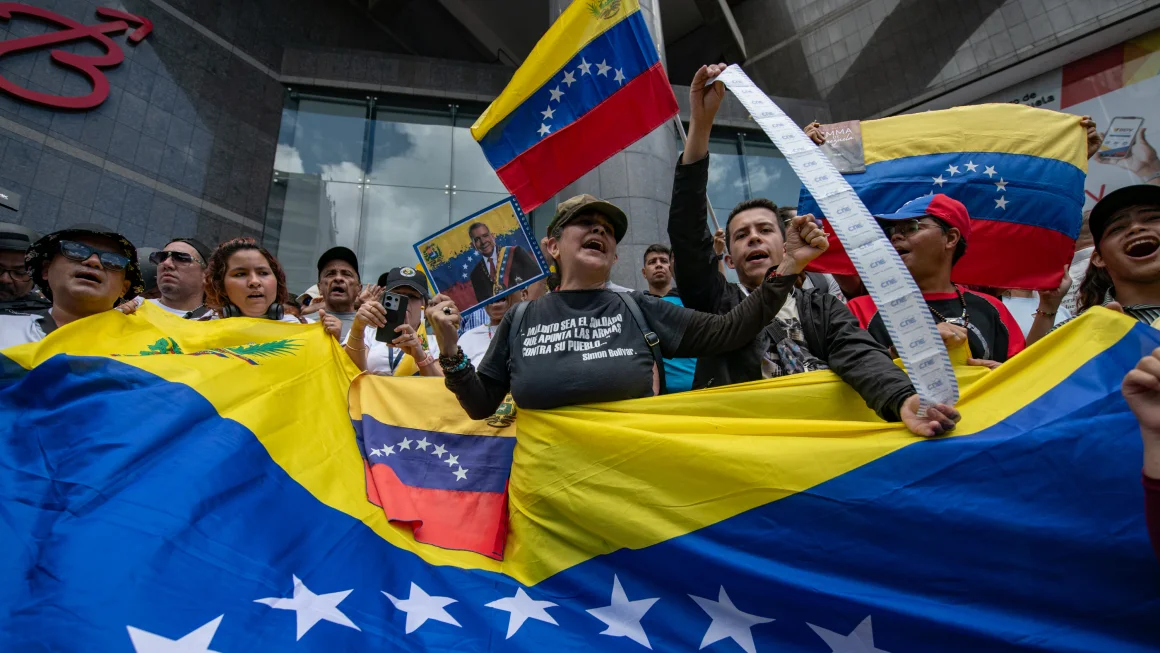
Venezuelans have seen this movie before, but Maduro should beware. This time, the ending could be different
It happened in Caracas on June 9, 2016, when I was there to cover a series of violent protests that had broken out in Venezuela.
That sunny day, as our CNN team was walking towards the building that houses the National Assembly for interviews, we noticed a group of men heading the same way from the opposite side of the street.
“Hurry up!,” CNN en español’s correspondent in Caracas Osmary Hernández said. “I think the colectivos are up the street.” We all picked up our pace and breathed a sigh of relief when we made it to the building. Colectivos are armed groups that function like a street gang, but are closely affiliated with the socialist government and often do their dirty work.
Moments after we made it inside the building, Julio Borges, an opposition member of the assembly and its former president, arrived in bad shape. He had a bloody nose and said a group of opposition legislators like him had been attacked by colectivos as they were headed to the office of the national electoral authority. The month before, President Nicolás Maduro had declared a “constitutional state of emergency.”
Even before that tumultuous period, it had become abundantly clear that Maduro’s government had absolute control of all three branches of government as well as the the National Electoral Council (CNE).
And, as we had just witnessed, it also controlled the streets of Caracas. Maduro, now 61, is a former bus driver who became a Caracas metro system union leader and rose through the ranks. He is the handpicked successor of the late strongman Hugo Chávez, who ruled Venezuela from 1999 until his death in 2013.
A new wave of violence shook Venezuela once again in 2019. In January of that year, Juan Guaidó, then president of the National Assembly, had proclaimed himself interim president of Venezuela. The then-35-year-old Guaidó argued that he had the constitutional right to the presidency as leader of the assembly because Maduro, who had been sworn in only days before, was an illegitimate president.
Both the opposition and leaders of several countries in the region had called the previous year’s election a sham. Guaidó convinced 50 countries that he had a right to be president, including the United States.
By June 2019, when I returned to Caracas, Guaidó had already attempted a military uprising that almost succeeded on April 30, followed by weeks of violent clashes between protesters and security forces that left dozens dead.
The world started to pay close attention to Venezuela once again in the last few months as the country was getting ready to hold a new presidential election. Would Maduro allow the opposition to run a candidate of its choosing? Would this be a free, fair, and transparent election? Would the colectivos once again be used to intimidate voters as they had done in previous elections?
The first and second questions were answered in January when opposition leader María Corina Machado was barred by Venezuela’s highest court from running for president (or any other elected position) for 15 years over alleged financial irregularities. Machado had won more than 90% of the vote in last October’s opposition primary. She attracted large crowds everywhere she went, even though the government did everything possible to stop her, even persecuting those who rented sound systems to her campaign.
The third question was answered in the last hours of the election itself on Sunday when colectivos showed up at at least one polling center in Caracas and started beating up opposition sympathizers who had been asked by the leadership to keep an eye on ballot boxes in an effort to prevent tampering.
Those of us who have been following Venezuela for decades have seen this movie before: a “sham” election to justify Maduro’s staying in power. Democracy has been gradually weakening in Venezuela over the last 25 years since the charismatic socialist leader Chávez rose to power in 1999.
While Venezuelans and the world awaited results Sunday night, the country’s electoral authority delayed publication, alleging the system had been targeted by hackers operating from North Macedonia without showing any evidence. This was not surprising in a country where all three branches of government are in the hands of government loyalists, hundreds of opposition leaders have been imprisoned, and true democracy hasn’t existed in a generation.
“Is there anything different this time?” That’s the question I asked Michael Shifter, the former president of the Inter-American Dialogue and current professor of Latin American Politics at Georgetown University, who has been following Venezuelan politics for decades.
Shifter said the Maduro victory was a “blatant, massive and egregious fraud,” but the opposition managed to do something it had been unable to do before: uniting behind a single candidate and going to the polls in massive numbers.
“The alternative [to participating in the election] was taking themselves completely out of the political game, saying ‘we refuse to take part in this unfair and unjust election,’ but that would’ve left the opposition in a weaker position in practical and political terms” as it happened in 2018 when the opposition decided to boycott the whole process.
“I think the opposition learned that refusing to take part in elections was not helping their cause. They recognized that even when the elections weren’t free and fair, they needed to defeat Maduro on his terms, which they’ve done,” Shifter said.
Venezuela’s CNE declared Maduro the winner Monday saying he had won with 51.2% of the votes, with 80% of the ballots counted. His main rival, opposition candidate Edmundo González, had obtained 44.2% of the votes, according to the body.
Critics like former Bolivian President Jorge Fernando “Tuto” Quiroga, who was one of several former heads of state prevented from flying to Venezuela by its government as they tried to serve as observers, called the Maduro government a “desperate regime; an open, pure and hard tyranny that has chosen to steal the presidency staging a fraudulent coronation.” In an interview with CNN, he said that even the math didn’t add up when Venezuelan electoral authorities declared a winner with 80% of the vote counted.
“When you’re in first grade, you learn that 20 is more than seven,” Quiroga said. “The probability that [opposition presidential candidate] Edmundo [González] could’ve won was low, but still arithmetically possible,” at that point, he said, adding that prior to the election there were credible exit polls showing González was ahead by as much as 40 percent.
Just like 2016 and 2019, violence has returned to Venezuela. At least 11 people died during protests in Venezuela on Monday, according to the non-governmental organization Foro Penal on social media. Venezuelan authorities say more than 700 people were detained in the protests. The Venezuelan opposition political party Voluntad Popular said Tuesday that its leader Freddy Superlano has been kidnapped.
Unlike the 2018 election, Shifter says, this time the opposition “knows they won, and the regime knows they won.” The question now is how long the governing coalition that includes not only the socialists, but the armed forces can hold, Shifter said.
If that coalition becomes “divided and weaker, the armed forces may say ‘this ship is sinking and we don’t want to go down with it,’” Shifter said.
SOURCE: CNN
Read More...
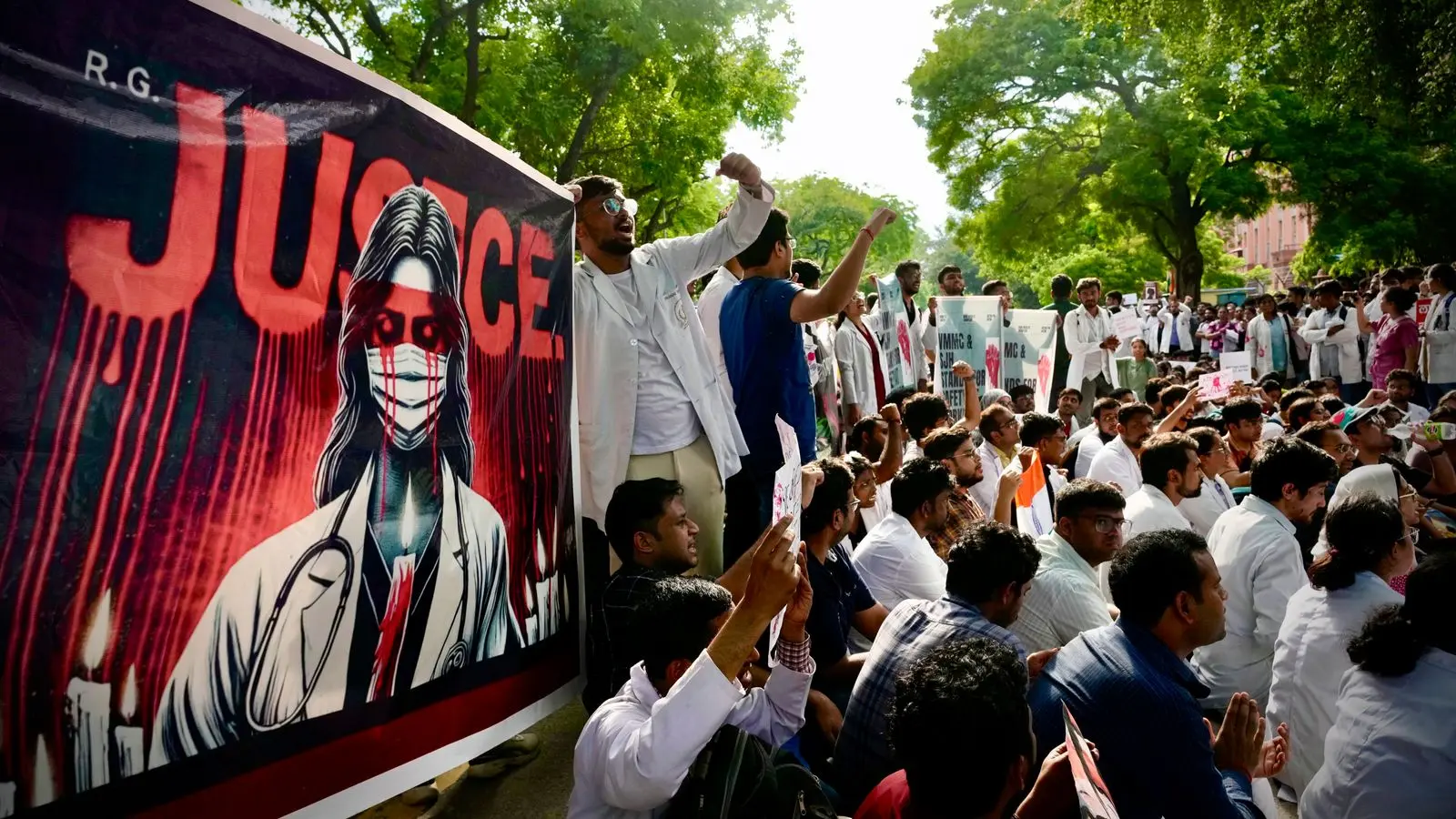
Patients turned away as doctors hold mass strike in India over rape and murder of trainee medic
Sexual violence against women is a widespread problem in India - many crimes are believed to go unreported due to stigma and a lack of faith in police.
Patients are being turned away from hospitals and clinics across India as more than a million doctors are set to join a strike in protest at the rape and murder of a trainee medic.
The 24-hour strike began at 6am local time (1.30am UK time) with non-emergency treatment such as outpatient appointments and elective procedures cancelled, said the Indian Medical Association (IMA).
The mass walkout paralysed hospitals as staff from medical colleges were drafted in to help with emergency cases.
The strike was triggered by the killing of a 31-year-old trainee doctor, whose body was found on 9 August at the college where she worked in Kolkata.
A police volunteer was arrested but the victim's family believe it was a gang rape and that more people were involved.
The case has drawn comparisons with the notorious rape and murder of a student on a bus in New Delhi in 2012.
People demonstrated near parliament in the capital on Friday - as well as cities including Kolkata, Hyderabad and Mumbai - calling for tougher sentences and guarantees of safety for doctors.
The facility where the doctor was killed, the state-run RG Kar Medical College and Hospital, was attacked on Wednesday.
"Doctors, especially women are vulnerable to violence because of the nature of the profession," said the IMA in a statement on X.
"It is for the authorities to provide for the safety of doctors inside hospitals and campuses."
Sexual violence against women and girls is a widespread problem in India with 31,516 reports of rape in 2022 - a 20% increase on 2021, according to the National Crime Records Bureau.
Many are believed to go unreported due to a stigma over sexual assault and a lack of faith in the police.
The medical college case is being handled by India's central bureau of investigation after state government officers were accused of mishandling the case.
Read More...

It is purely a trap to destroy
deception of reconciliation with the declaration of a two-state solution is the result of a conspiracy by the puppets of the global elite/Globalist,Cabals/Jews Elite & Zionist israel for Palestine & Israel.
It is purely a trap to destroy Palestine,Islam & Middle Eastern countries
👇
https://slashpage.com/maskugatiger
We Must Prepared at The Endtimes Era's Now!!!
#freedom #palestine #palestina
#news #community #update #global #unite #revolution #GCSC #endtimes #prophecy #civilsociety #ww3 #GreatReset #bunker
Read More...
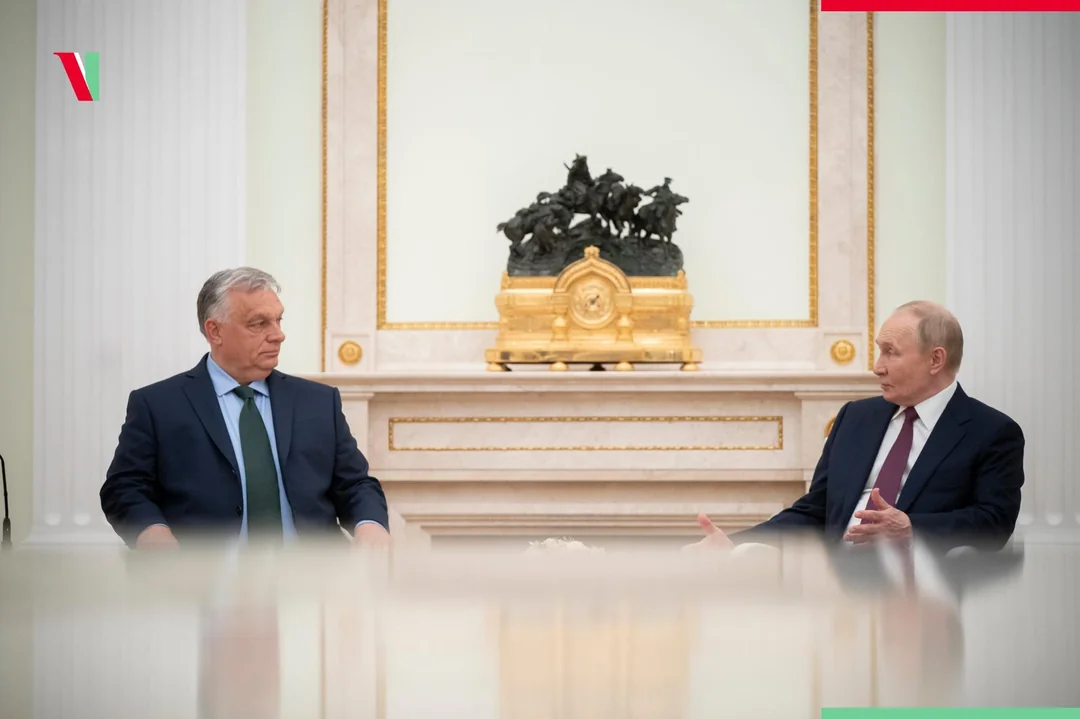
Since the outbreak of the war, Hungarian PM Viktor Orbán has paid Putin more than €15 billion for Russian gas and oil, becoming the biggest financier of the Russian war in the EU.
Since the outbreak of the Russian-Ukrainian war on 24 February 2022, Hungary has purchased gas and oil from Russia for a total of EUR 15.6 billion. According to data from the Centre for Research on Energy and Clean Air, an independent research institute in Finland, this makes the Orbán government the largest EU financier of Putin’s war. According to 444.hu, while many EU countries have drastically reduced their dependence on Russian energy sources, Hungary has taken a different path. Italy reduced its Russian gas imports from 43% in 2020 to 5% in 2024.
Austria announced it had found alternative routes, eliminating its dependence on Russian gas. Moreover, the Czech Republic and Poland had previously declared their independence from Russian gas. In contrast, Hungary has increased its gas imports from Russia to unprecedented levels.
#News #DailyNewsHungary
Read More...

Now Our Civil Society will do war with U.S Government & all technocrate in Cyberspace.
I am waiting for your action movement as soon as possible!!! ✊🇵🇸🚩📢🔥🔥🔥
for the souls of the Palestinian people who still survive & remain. with the spirit of life & determination of their undying struggle!!!
Visit👇
https://maskugacerita.flarum.cloud/
#freedom #palestine #palestina
#news #community #update #global #unite #revolution #GCSC #endtimes #prophecy #civilsociety #ww3 #GreatReset #bunker
Read More...
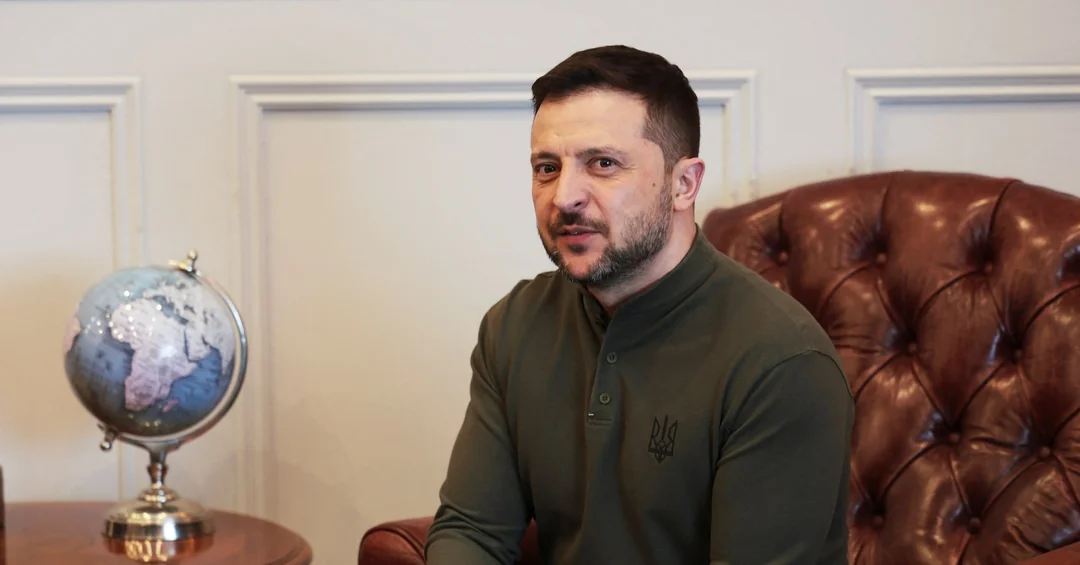
Zelenskiy says Ukraine should be heard, not forgotten
KYIV, March 1 (Reuters) - Ukrainian President Volodymyr Zelenskiy said on Saturday it was "very important" that Ukraine's plight was heard and not forgotten, a day after a heated White House meeting with U.S. President Donald Trump.
"It is very important for us that Ukraine is heard and that no one forgets about it, neither during the war nor after,"
#Reuters #News #Zelenskiy
Read More...

Trump supporters lose $12bn as president’s cryptocurrency coin collapses
Donald Trump’s supporters have lost more than $12bn (£9.5bn) in a month after the value of the president’s cryptocurrency collapsed.
$Trump, a so-called “meme coin” unveiled on Jan 17, three days before Mr Trump’s inauguration, has lost more than 80pc of its value since its peak on Jan 19.
This has led to its overall worth falling from a peak of $15bn to $2.7bn on Thursday, as it suffered amid a wider crypto rout.
The paper value of the coins owned by Mr Trump himself has also fallen by $50bn.
While Mr Trump’s own losses have not been crystallised, investors are on the hook after spending heavily to back the Trump coin in the run-up to his inauguration, partly as a show of support but also as a gamble that the token would rise in value.
#Trump #TrumpCoin #cryptocurrency #crypto #memeCoin #News
Read More...
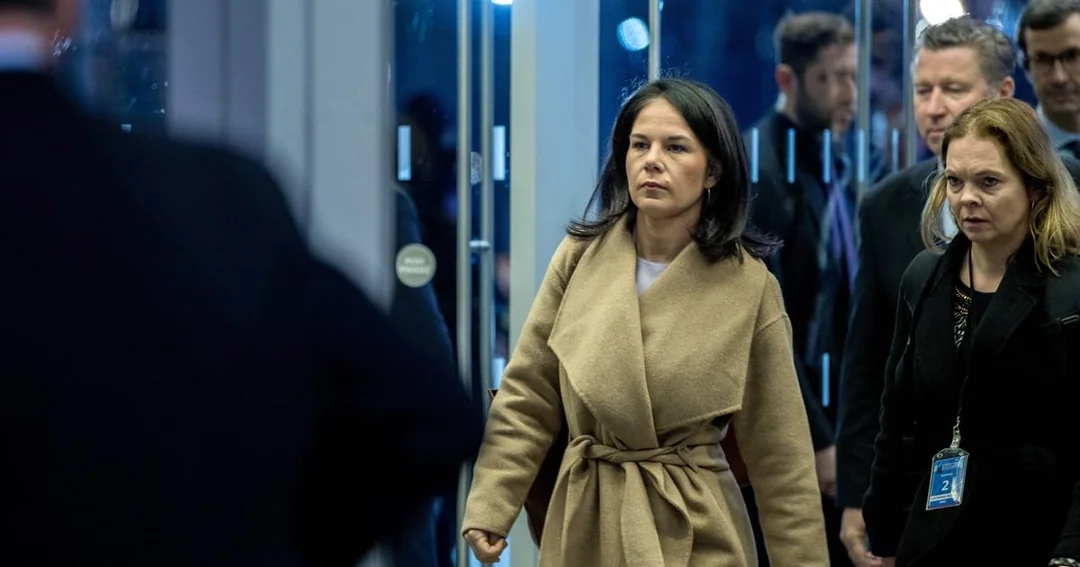
Europe must show leadership against Trump’s ‘ruthlessness,’ Germany's foreign minister says
With U.S. support in doubt, German foreign minister warns that Europe must lead on Ukraine or risk losing its security.
BERLIN — As European leaders prepare to meet in London on Sunday for an emergency summit on Ukraine, German Foreign Minister Annalena Baerbock has called for Europe to show decisive leadership in the wake of the Oval Office clash between U.S. President Donald Trump and Ukrainian President Volodymyr Zelenskyy.
In a starkly worded speech delivered Saturday in the Foreign Ministry, Baerbock warned of a “new era of ruthlessness” following Trump’s public humiliation of Zelenskyy and the U.S. administration’s shifting stance on Russia's invasion of Ukraine.
“A ruthless time has begun, in which we must defend the rules-based international order and the strength of law more than ever against the power of the strongest,” Baerbock said.
#Berlim #News #Europe #Ukraine
Read More...
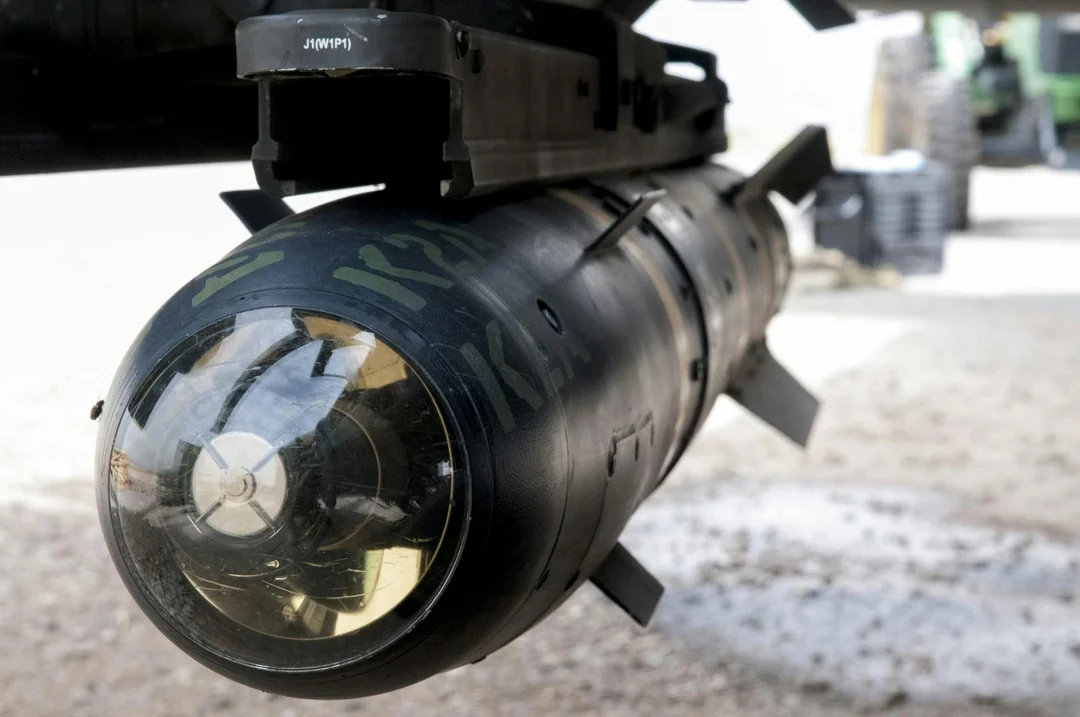
Israel to purchase over 8,000 missiles and bombs from U.S.
The United States has approved two major Foreign Military Sales (FMS) to Israel, valued at £6 billion ($7.41 billion), aimed at bolstering the Israeli Air Force’s operational readiness with advanced missiles and precision-guided munitions.
The first sale involves 3,000 AGM-114 Hellfire Air-to-Ground Missiles, comprising a mix of variants such as R3, F, and K. The package, valued at £520 million ($660 million), includes spare parts, test equipment, software support, and technical assistance.
Lockheed Martin will serve as the primary contractor, with deliveries beginning in 2028.
#Israel #News
Read More...

UK gives royal welcome to Zelenskyy after White House meltdown
King Charles will hold an official audience at Sandringham with the Ukrainian president Volodymyr Zelenskyy on Sunday as the UK and EU demonstrate their “unwavering” support after his humiliation at the hands of Donald Trump and JD Vance in the White House.
Keir Starmer will also host European heads of government and the leaders of Canada and Turkey at a special defence summit aimed at presenting a united front on the Ukraine crisis.
On arrival in Downing Street for a meeting with Starmer on Saturday night, just 24 hours after Trump and his vice-president Vance subjected him to a 10-minute tirade in the Oval Office, Zelenskyy said he was “very happy” that the king had agreed to the meeting.
The offer of a royal audience was seen at Westminster as a deliberate move to give the Ukrainian president equal treatment to Trump, who was presented during his meeting at the White House on Wednesday by Starmer with an invitation to a second state visit to the UK, including a meeting with King Charles.
#Zelenskyy #UK #News
Read More...
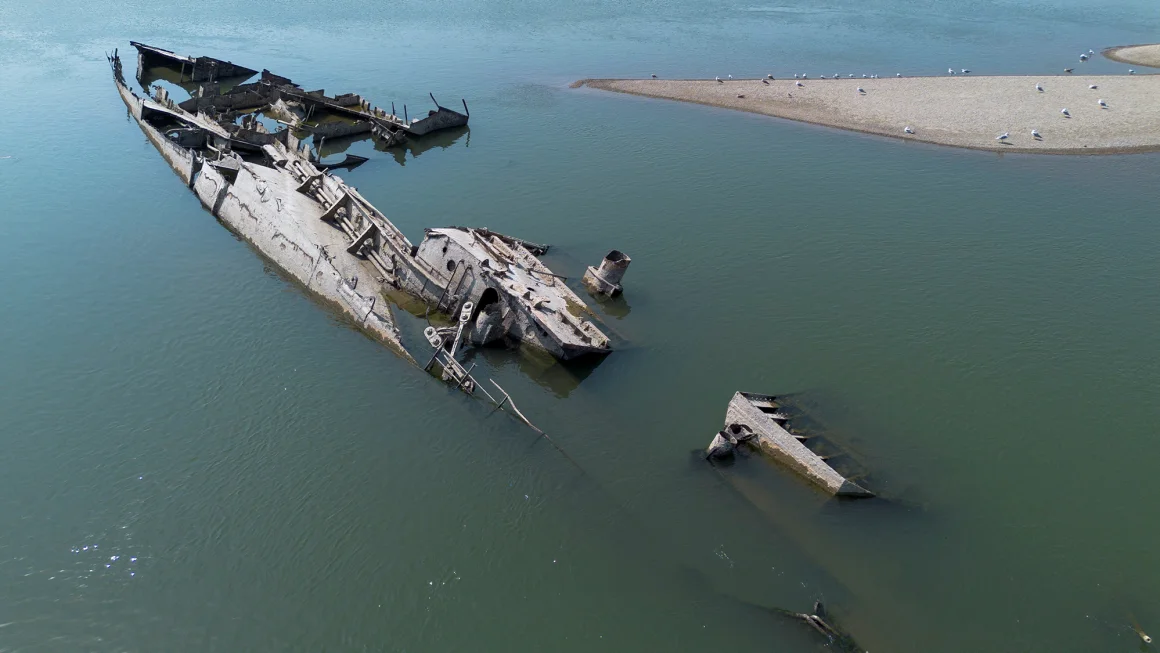
Drought-hit Danube River reveals scuttled German World War II ships
Mohacs, Hungary/Prahovo, Serbia
Reuters
—
The wrecks of explosives-laden Nazi ships sunk in the Danube River during World War II have emerged near Serbia’s river port town of Prahovo, after a drought in July and August that saw the river’s water level drop.
Four vessels dating from before 1950 have also come to light in Hungary’s Danube-Drava National Park near Mohacs, where the Danube’s water level stood at only 1.5 meters (4.9 feet) on Tuesday, the lingering effect of severe heat waves and persistent drought in July and August.
The vessels revealed in Prahovo were among hundreds scuttled along the Danube by Nazi Germany’s Black Sea fleet in 1944 as they retreated from advancing Soviet forces, destroying the ships themselves. The wrecks can hamper river traffic during low water levels.
Strewn across the riverbed, some of the ships still have turrets, command bridges, broken masts and twisted hulls, while others lie mostly submerged under sandbanks.
Endre Sztellik, a guard at the Danube-Drava national park, said of one of the ships, “we still don’t know what this is exactly. What is visible and an unfortunate fact is that the wreck is diminishing as people are interested in it and parts of it are going missing.”
The Danube stood at 1.17 meters (3.8 feet) in Budapest on Tuesday, which compares with an all-time record low of around 0.4 meters (1.3 feet) registered in October 2018. During floods, the Danube rises well above 6 meters (19.7 feet).
“Eastern Europe is experiencing critical drought conditions that are affecting crops and vegetation,” the European climate service Copernicus said on its website in its latest drought report, published earlier this month.
Long-awaited rainfall set in on Monday, which is expected to raise Danube levels to around 3 meters (9.8 feet) at Mohacs by the weekend, with the river likely to submerge the shipwrecks again.
The level of Poland’s longest river, the Vistula, has fallen to a record low, leaving sandbanks exposed in Warsaw and water so shallow a moose was filmed walking across it in a section in the countryside.
#news
Read More...
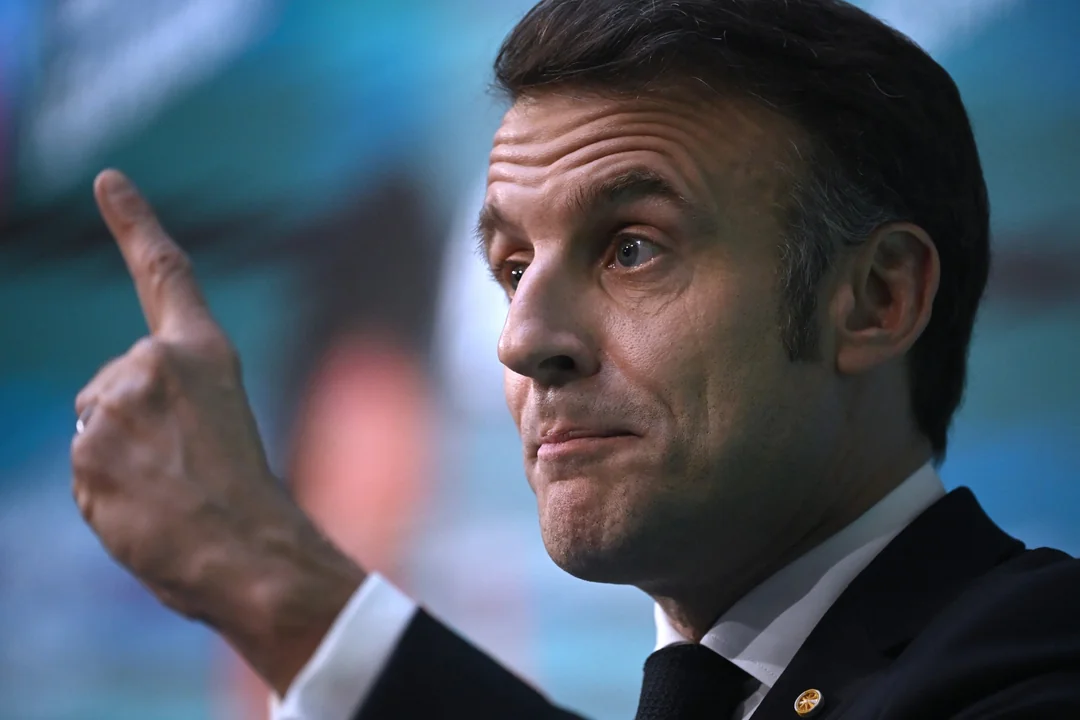
Macron raises prospect of new European nuclear weapons
French President Emmanuel Macron has said he is ready to start discussions for nuclear deterrence for Europe in response to the threat posed by Moscow.
Macron told the newspaper Le Monde he was ready for talks about nuclear weapons for the continent following a request from the likely German chancellor, Friedrich Merz.
The French president's comments on Friday follow reports earlier in the week that France was ready to use its nuclear deterrent to help protect Europe.
Michael Witt from King's Business School, King's College London, told Newsweek that France's offer to extend its nuclear umbrella was in response to President Donald Trump signaling a retreat from NATO which meant Europe could not rely on U.S. protection.
#News #Macron #Europe #News #NewsWeek
Read More...
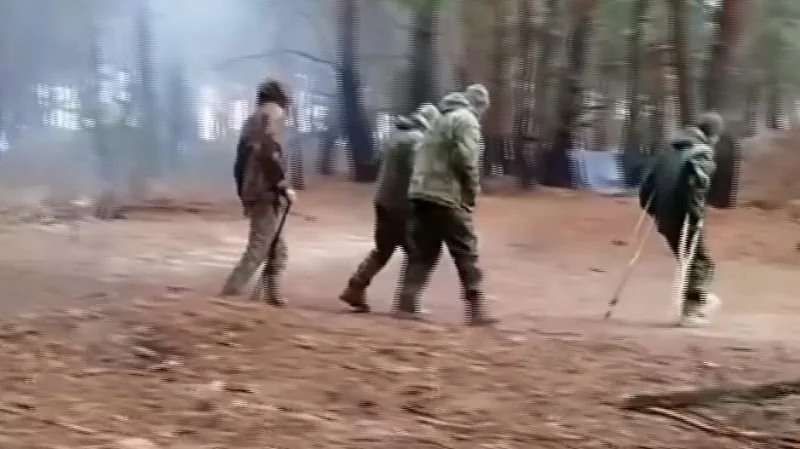
Russia is ‘recycling’ wounded troops, sending some to the frontline on crutches
Kyiv & London
CNN
—
The Russian military is sending wounded troops on crutches back to the frontlines to fight, and redeploying soldiers with significant injuries to combat roles, as it struggles with growing manpower issues, according to videos and testimony obtained by CNN.
Frontline footage posted by Ukrainian drone operators and Russian troops show men who have clearly suffered leg injuries, some still bandaged, using crutches in combat areas, in several instances targeted by Ukrainian drones as they use the walking aids to try to flee.
“The Russians are recycling the wounded back into the fight,” one Western official said, referring to videos of “troops on crutches being pushed back into the line.”
The use of wounded soldiers is a sign that Moscow is managing its growing manpower issues without a wider, general mobilisation, which would be unpopular among Russia’s urban middle classes, according to the official, who spoke to CNN on condition of anonymity on a sensitive topic.
#Russia #CNN #News
Read More...

Are u Afraid Catastrophe & Ww3 Right?!!
We Must Prepared at The Endtimes Era's Now!!!
#freedom #palestine #palestina
#news #community #update #global #unite #revolution #GCSC #endtimes #prophecy #civilsociety #ww3 #GreatReset #bunker
Read More...
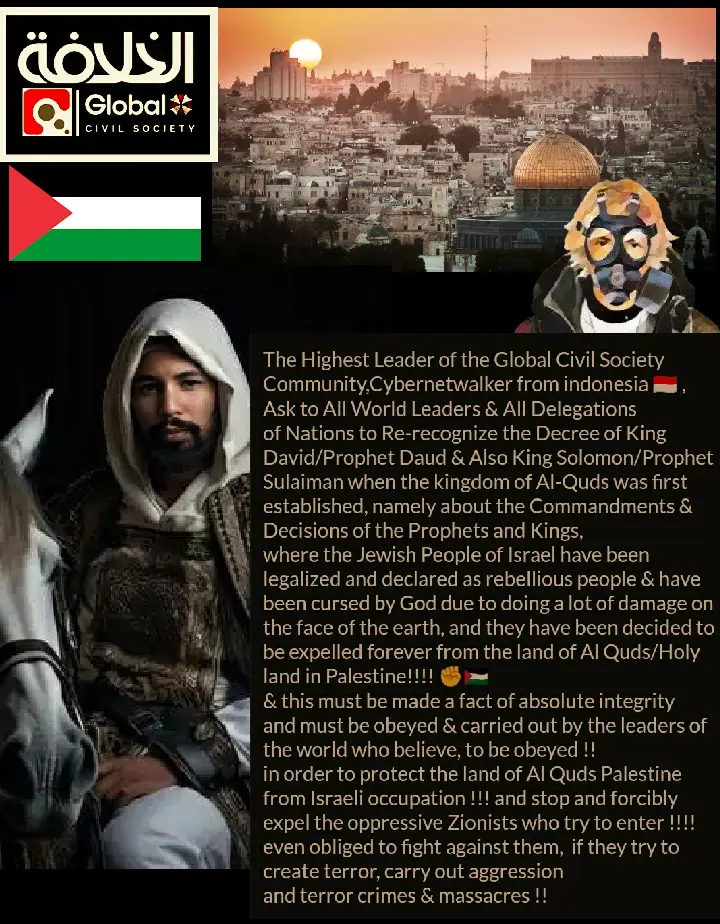
Ask to All World Leaders & All Delegations of Nations , About Palestine ✊🇵🇸
The Highest Leader of the Global Civil Society Community,
Cybernetwalker from indonesia 🇮🇩,
Ask to All World Leaders & All Delegations of Nations
to Re-recognize the Decree of King David/Prophet Daud & Also King Solomon/Prophet Sulaiman.
About Palestine ✊🇵🇸
And 👊💢 Israel !!
👇
slashpage.com/maskugatiger
We Must Prepared at The Endtimes Era's Now!!!
#freedom #palestine #palestina
#news #community #update #global #unite #revolution #GCSC #endtimes #prophecy #civilsociety #ww3 #GreatReset #bunker
Read More...

if you Seriously Want to Survive in this End Times!!!
& I'm Cybernetwalker, so Search and Find me here 👇
https://slashpage.com/maskugatiger ,
or search on Google keyword: "Maskuga Slashpage"
and don't forget, Bookmark My Web! 😉👍
if you Seriously Want to Survive in this End Times!!! 😇
We Must Prepared at The Endtimes Era's Now!!!
#freedom #palestine #palestina
#news #community #update #global #unite #revolution #GCSC #endtimes #prophecy #civilsociety #ww3 #GreatReset #bunker
Read More...
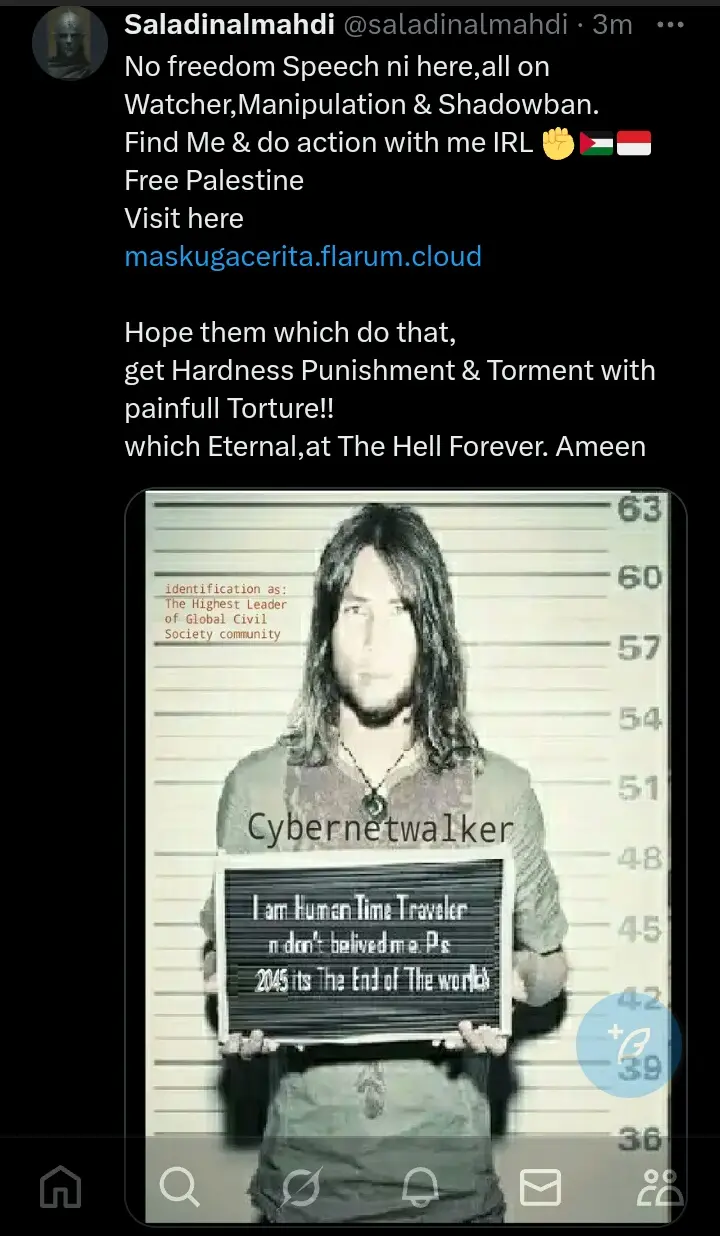
No More a Freedom Speech ✊🇵🇸📢 follow Me to do Act Movements!!
We Must Perpraed at The Endtimes Era's Now!!!
#freedom #palestine #palestina
#news #community #update #global #unite #revolution #GCSC #endtimes #prophecy #civilsociety #ww3 #GreatReset #bunker
Read More...

The UN Lying ABout Palestine !!! ✊🇵🇸
👇
https://forumsclub.com/gc/319-global-civil-society-community/
We Must Prepared at The Endtimes Era's Now!!!
#freedom #palestine #palestina
#news #community #update #global #unite #revolution #GCSC #endtimes #prophecy #civilsociety #ww3 #GreatReset #bunker
Read More...
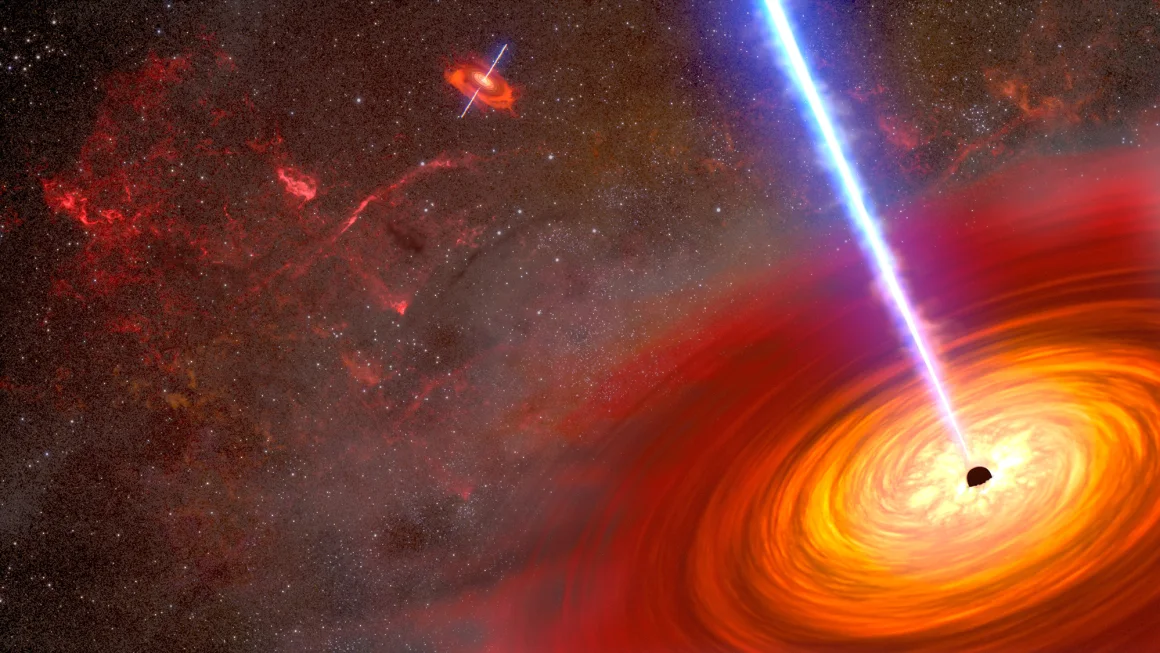
Bright lights detected by NASA telescopes lead to a dancing pair of supermassive black holes
Two telescopes have spotted the closest pair of supermassive black holes to date. The duo, only about 300 light-years apart, were observed in different wavelengths of light using NASA’s Chandra X-ray Observatory and the Hubble Space Telescope.
While black holes are invisible against the dark void of space, these two blaze brightly as the gas and dust they feed on is accelerated and heated to high temperatures. Both celestial objects, which circle around one another, are known as active galactic nuclei.
Active galactic nuclei are supermassive black holes that release bright jets of material and high winds that can shape the very galaxies where they are found.
The black hole duo is the closest pair found through visible and X-ray light. While other black hole pairs have been observed before, they are usually much farther apart. Astronomers discovered these black holes dancing around one another at the center of a pair of colliding galaxies called MCG-03-34-64, which is 800 million light-years away.
Astronomers serendipitously found the black holes when Hubble’s observations revealed three spikes of bright light within the glowing gas of a galaxy. They published their discovery Monday in The Astrophysical Journal.
“We were not expecting to see something like this,” said lead study author Anna Trindade Falcão, a postdoctoral researcher at the Center for Astrophysics | Harvard & Smithsonian in Cambridge, Massachusetts, in a statement. “This view is not a common occurrence in the nearby universe, and told us there’s something else going on inside the galaxy.”
Zooming in on bright cosmic lights
The team was intrigued when Hubble picked up on three optical diffraction spikes in a concentrated region of the MCG-03-34-64 galaxy. Diffraction spikes appear when light from a small cosmic region bends around the mirror inside telescopes.
Hubble’s observations were made in optical light, which is visible to the human eye, but the astronomers weren’t sure what they were seeing. Falcão’s team took another look at the galactic region with Chandra in X-ray light.
When the scientists observed the galaxy using Chandra, they were able to pinpoint two powerful sources of X-ray light that matched the optical light sources spotted by Hubble, Falcão said. “We put these pieces together and concluded that we were likely looking at two closely spaced supermassive black holes.”
The team also consulted archival observation radio wave data collected by the Karl G. Jansky Very Large Array of radio telescopes near Socorro, New Mexico. The black hole duo was also found to release energetic radio waves.
“When you see bright light in optical, X-rays, and radio wavelengths, a lot of things can be ruled out, leaving the conclusion these can only be explained as close black holes. When you put all the pieces together it gives you the picture of the (active galactic nuclei) duo,” Falcão said.
Meanwhile, the third diffraction spike observed by Hubble has an unknown origin, and the team requires more data to understand what it could be. The source of light might be from gas that was shocked by an energetic release of material from one of the black holes.
“We wouldn’t be able to see all of these intricacies without Hubble’s amazing resolution,” Falcão said.
Astronomers have observed pairs of black holes that are closer together than these two through radio telescopes, but those duos haven’t been observed in other wavelengths of light.
Both supermassive black holes once served as the centers of their respective galaxies, but a galactic merger brought the two objects much closer together. Eventually, their close spiral will result in a merger in about 100 million years, according to NASA, causing an energetic release of gravitational waves, or ripples in the fabric of space and time.
Such gravitational waves created by the collisions of supermassive black holes could be detected in the future by LISA, the European Space Agency-led Laser Interferometer Space Antenna mission that’s expected to launch in the mid-2030s.
#universe #news
Read More...
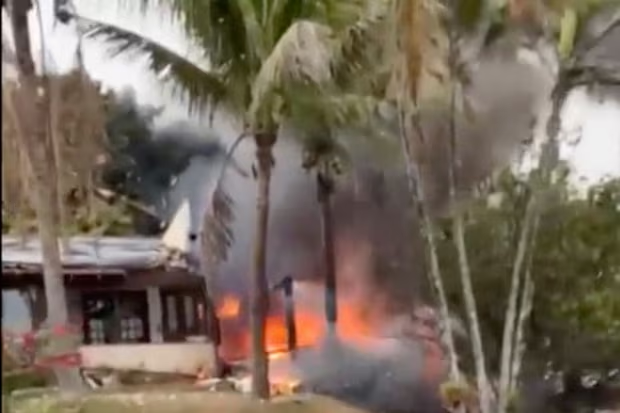
No survivors from plane that crashed in Brazil with 61 people on board, officials say
The Voepass aircraft crashed into a residential area, although there were no reports of casualties on the ground
A passenger plane with 61 people on board has crashed in a fiery wreck in Brazil’s São Paulo state, killing all passengers and crew.
The airline Voepass initially reported 62 people had been on the plane but later revised the figure to 61, confirming the deaths of all 57 passengers and four crew members on board.
“At this time, Voepass is prioritizing provision of unrestricted assistance to the victims’ families and effectively collaborating with authorities to determine the causes of the accident,” the company said in a statement
“There are no survivors,” Col Emerson Massera of the Brazilian military police told reporters at the crash site in the city of Vinhedo late on Thursday.
Massera said the fire had been brought under control, but about 50 firefighters were still working to cool down the area. “It’s a very sad scene; our work now is focused on clearing the area so that the investigation and identification of the bodies can proceed,” he said.
The ATR-72 turboprop plane was en route from Cascavel, in the state of Paraná, to Guarulhos, in São Paulo, when it crashed in a residential neighbourhood about 76km away from the state capital.
No casualties were reported on the ground, according to Col Cassio Araújo de Freitas, the general commander of the military police, who said: “We have no reports of any other victims besides those on the aircraft.”
According to the Flight Radar website, the plane was traveling at 17,000ft before plunging 4,000ft in two minutes, and then its signal was lost.
Video shared on social media showed the plane spiraling out of control as it plunged down into a cluster of trees, followed by a large plume of black smoke.
Another clip showed flames and smoke coming from the plane fuselage where it had apparently plowed into the side of a house. Burning debris and at least one body could be seen strewn across the gardens of a residential area, while emergency vehicles arrived.
Ana Lúcia de Lima, who lives nearby, told the UOL news website that the noise was so loud it “sounded like it was falling into my house … The first blast was strong, there was already dark smoke coming out, and then there were several more explosions.”
Another resident, Daniel de Lima, said he heard a loud noise before looking outside and seeing the plane in a horizontal spiral.
“It was rotating, but it wasn’t moving forward,” he told Reuters. “Soon after, it fell out of the sky and exploded.”
The Brazilian air force and the federal police sent teams of investigators to the site.
The head of the air force’s Aeronautical Accident Investigation and Prevention Centre, Brigadier Marcelo Moreno, said that there was no timeline for the investigation to be completed. He said: “It is still very premature to say anything.”
But he said it was already clear that “there was no communication from the aircraft to the control authorities indicating an emergency”.
Voepass stated that the aircraft had taken off “without any flight restrictions, with all its systems functioning properly for the operation”.
Speaking at an event in southern Brazil on Friday afternoon, just minutes after the accident, the president, Luiz Inácio Lula da Silva, called for a minute of silence for those lost in the crash.
#news #brazil
Read More...
